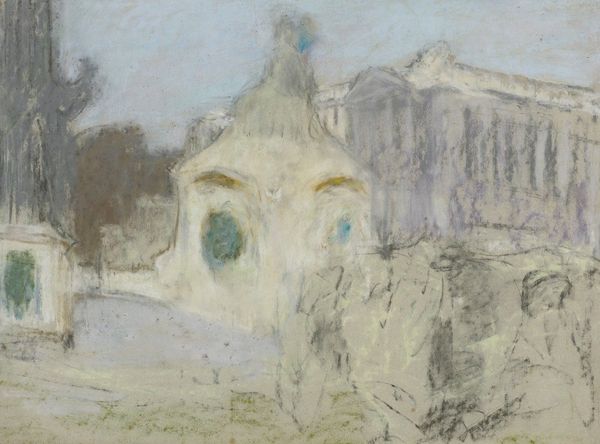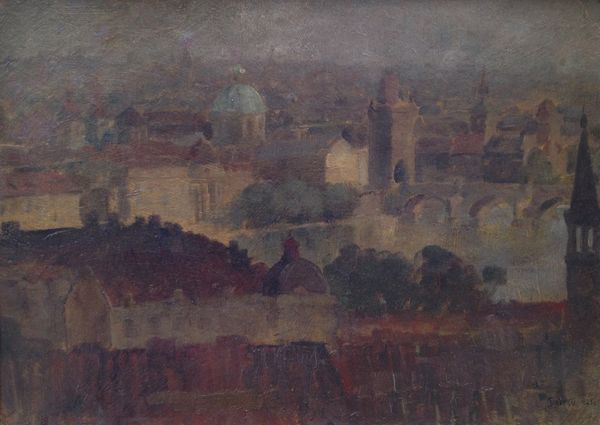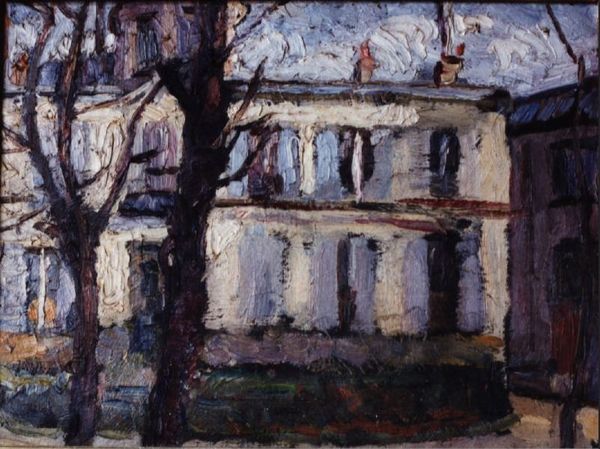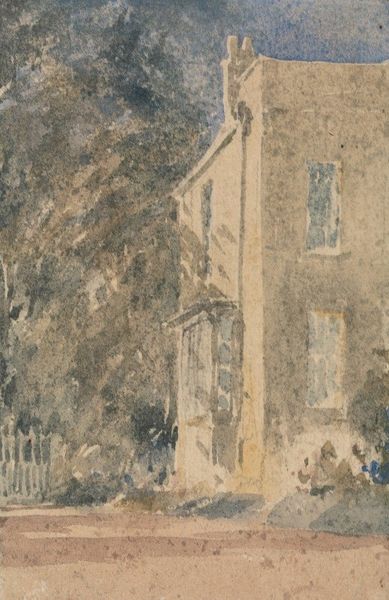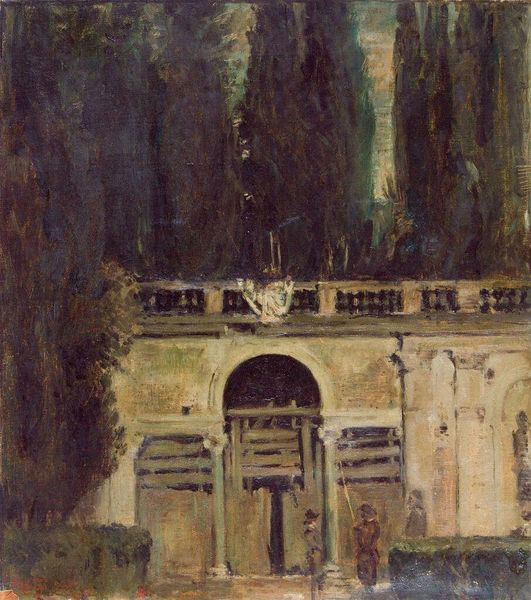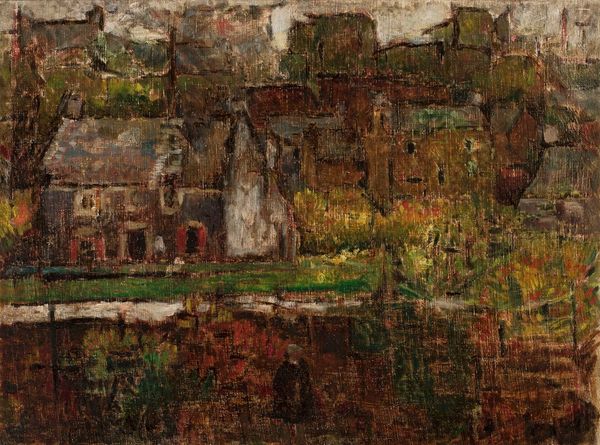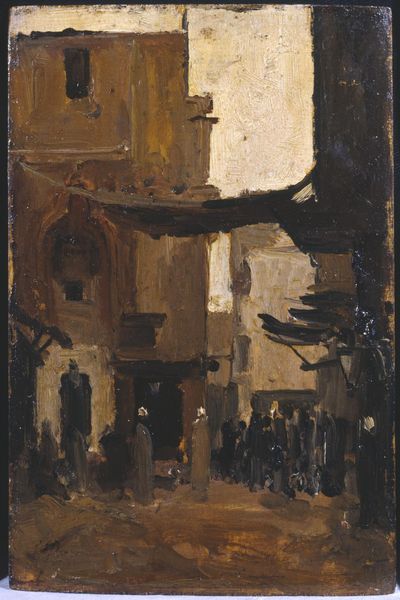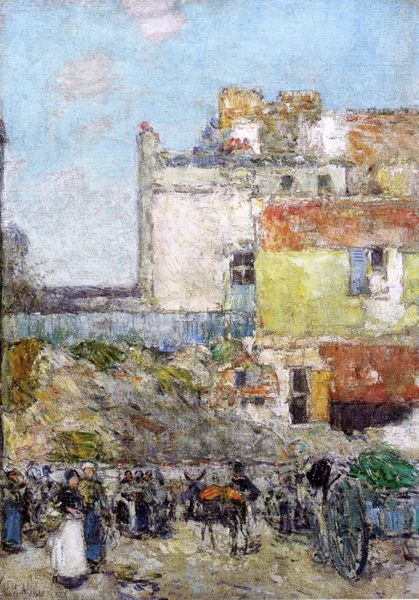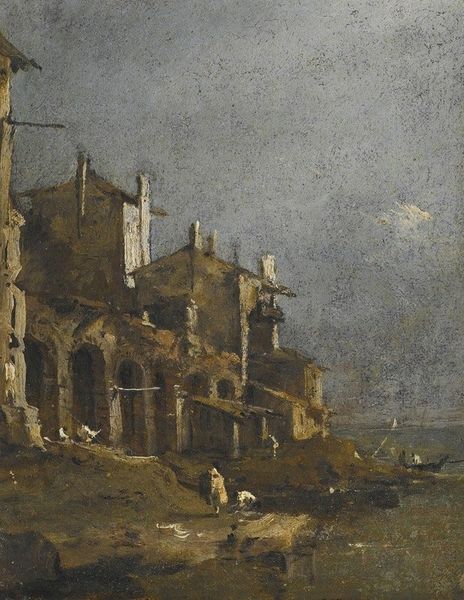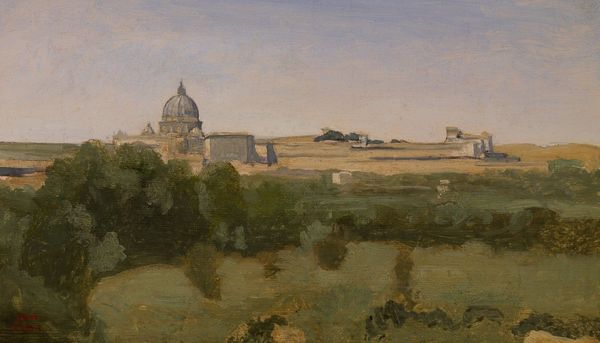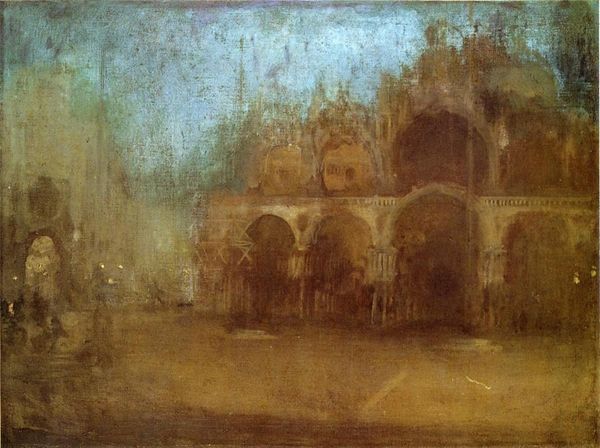
oil-paint, architecture
#
baroque
#
impressionism
#
oil-paint
#
landscape
#
impressionist landscape
#
oil painting
#
cityscape
#
architecture
Copyright: Public domain
Editor: So, here we have Antonio Mancini’s "Italian Town View," an oil painting depicting a cityscape. I’m really struck by the thick, almost muddy texture of the paint, especially in the foreground. It gives the buildings a sense of weighty presence, almost like they're rising from the earth itself. What do you see in this piece? Curator: I’m interested in that weighty presence you mention. Look at how Mancini has handled the material; the oil paint is not just representing architecture, it's building it anew. The brushstrokes themselves become the bricks and mortar. Considering the potential social context, were these materials readily available? How might material scarcity influence his artistic choices? Editor: That's fascinating! I hadn't considered the accessibility of materials. So, you're saying the choice of oil paint, and its application, reflect something beyond just aesthetic preference? Curator: Precisely. Think about the labor involved in acquiring, preparing, and applying the paint. Mancini isn’t just depicting a town; he’s engaging with a specific mode of production. Were there alternative materials available? And how might the "impressionistic" style challenge the norms of traditional high art, by drawing our attention to the material conditions of its creation? Editor: I guess, at the time, focusing on the roughness and texture of the paint itself, rather than just trying to create a perfect illusion of a cityscape, was a way of making a statement? About labor and material? Curator: Absolutely. And perhaps even critiquing the prevailing social structures through a focus on the materials themselves. He encourages us to reflect upon how art is made, and what that making signifies. It opens avenues to consider how social factors shape artistic choices. Editor: Wow, I hadn’t thought about the painting in those terms at all. I just saw a cityscape. But now I see it as a record of its own making, embedded in a specific time and place. Curator: Exactly. Thinking about the materials and their manipulation brings the artwork into a wider social and historical conversation. It shifts our focus to the art of production, not just the production of art.
Comments
No comments
Be the first to comment and join the conversation on the ultimate creative platform.
